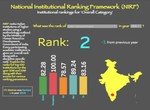Narendra Kumar, PhD
Assistant Professor, Computational Biology and Bioinformatics
Jaypee University of Information Technology
Biography
Narendra is an assistant professor at Jaypee University of Information Technology, Waknaghat, India. He specializes in computational biology and bioinformatics, and teaches undergrad and masters level degree courses. His research work focuses on discerning genome organization and its role in gene expression regulation. He takes data centric approach and uses high throughput “omics data” from public sources to understand biological processes. Narendra leverages his previous work in modelling intermolecular interactions to identifying targets and roles of important molecular players in genomes. He is interested in developing new computational tools in bioinformatics and computational biology, and has years of experience in programming in Perl, Python and R.
Narendra has previously worked in the fields of enzyme function prediction and molecular interaction as a postdoctoral fellow at Georgia Institute of Technology, Atlanta, US. Further, he worked at the Institute of Cancer Sciences, University of Glasgow, UK, where he studied genome organization and gene regulation in human using the Next Generation Sequencing technologies. He has developed a number of bioinformatics tools and published his research in peer-reviewed journals.
Narendra is always interested in learning new tools and techniques in Data Sciences and Data Visualization. He loves digital photography and fine arts. Some of his clicks could be found here.
Interests
- Computational Genomics
- Chromatin Remodelling
- Gene Regulation
- Genome Mining
- Next-Gen Sequencing Data
- Data Sciences
- Structural Biology
- Protein-protein Interaction
- Intramolecular Interaction
- Data Visualization
- Computational tool development
- Machine Learning
Education
-
PhD in Computational Biology, 2010
National Institute of Immunology
-
MSc in Biomedical Sciences, 2003
Dr B R Ambedkar Center for Biomedical Research, University of Delhi
-
BSc in Biological Sciences, 2001
SGTB Khalsa College, University of Delhi












